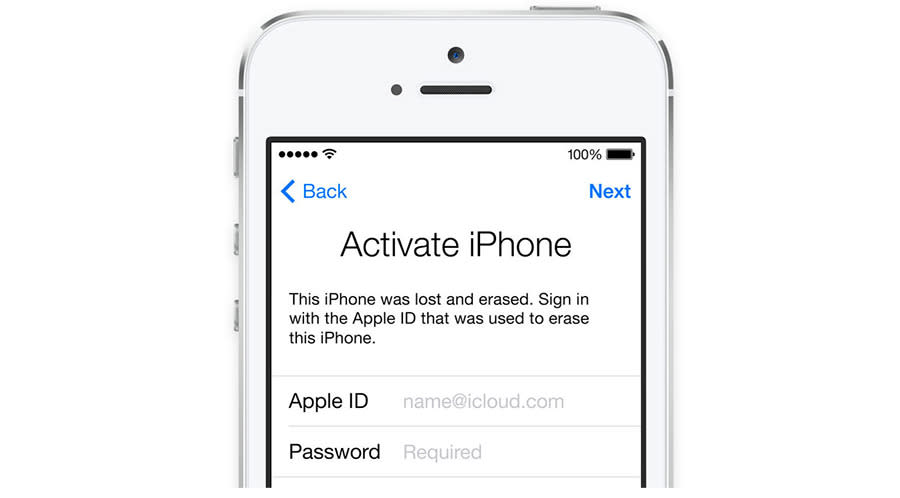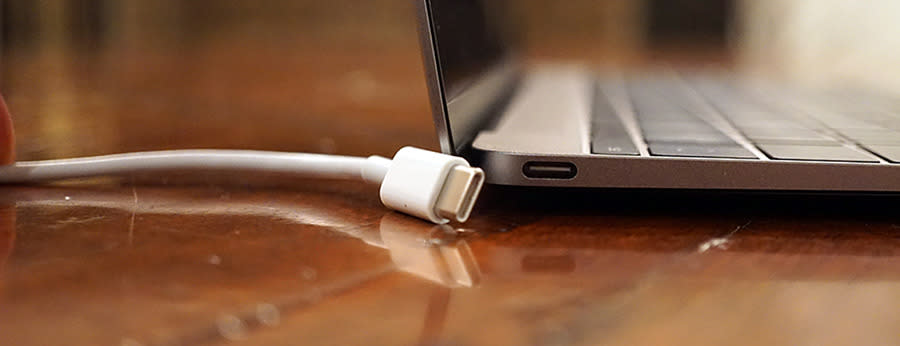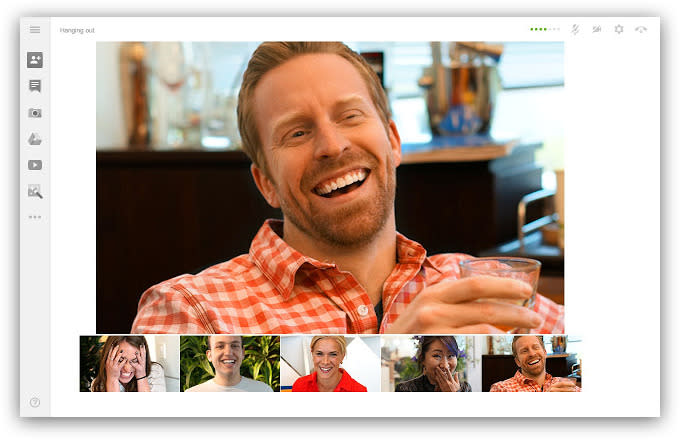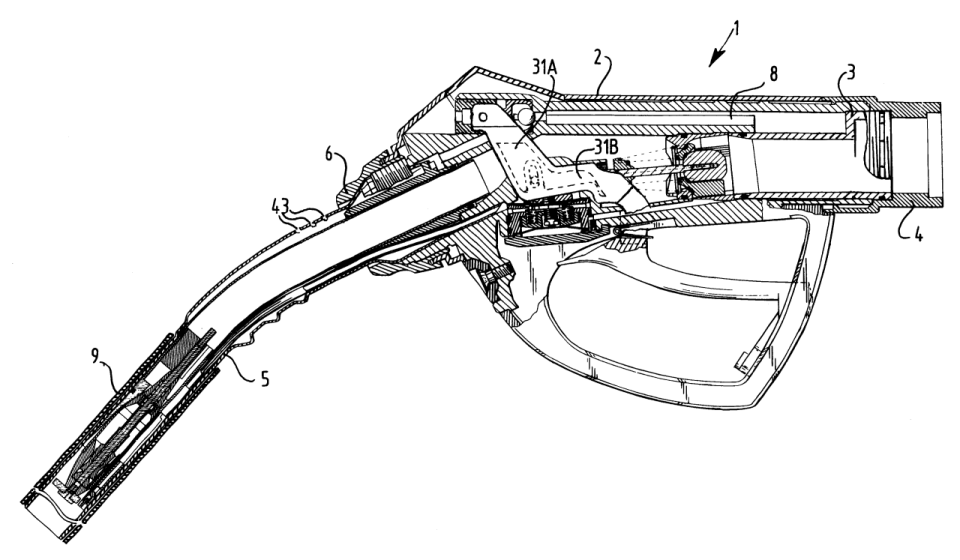7 Tech Trends to Be Thankful for Today
Most of the year, what do we do? We sit around and grouse about our technology. “My calls drop!” “The WiFi is so slow!” “Apple changed the design of its laptop power connectors again!”
But today is Thanksgiving! Today is the day to sit back, pat our tummies, and ponder all the good things tech has brought us. And if you really think about it, there’s actually quite a lot to be grateful for.
Phone kill switches
At one point, 69 percent of all smartphone thefts reported in San Francisco, and 40 percent in New York City, involved stolen iPhones.
Then, in 2013, Apple introduced a feature it called activation lock. What a brilliant, incredibly simple idea: Thieves can’t erase, jailbreak, or restore an iPhone without knowing your Apple password. And if they can’t erase an iPhone, they can’t resell it. And if they can’t resell it, why would they bother stealing it in the first place?

You might never even realize that this feature is protecting you—but it’s been disastrous for the thieves. Within months of activation lock’s introduction, iPhone robberies dropped 40 percent in San Francisco, 30 percent in New York City, and 50 percent in London. (During the same period, the rate of stolen Samsung Galaxy phones [without kill switches] increased.)
California, impressed, passed a new law making this “kill switch” feature mandatory in all phones—and today, similar features are in, or coming soon, to phones from Google, Samsung, and Microsoft.
The bottom line is that if your phone hasn’t been stolen, it may well be because of a feature you didn’t even know was working for you.
Google Maps
I wonder if any environmental scientist has ever tallied up the millions of tons of carbon dioxide that Google Maps has kept out of the atmosphere—by eliminating mindless driving around, lost?
I wonder if anyone appreciates that only eight years ago, getting real-time traffic data shown by the road colors in Google Maps, cost $80 a year on GPS units?

I wonder if anyone realizes how great the Google Maps app is, even if you never go anywhere—because it incorporates a global Yellow Pages of information about every business everywhere? Store hours, phone numbers, even photos.
The most amazing part: All of this is free!
The fading of clickbait
A year ago, our lives were made miserable by clickbait headlines: obnoxious teaser headlines, like, “You Won’t Believe What This Coed Did To Her Boyfriend” or “This Man Was Issued A Ticket. His Response Was Brilliant!” They’re always overhyped, and often deceptive—all in the name of driving up a Web site’s traffic.

Two wonderful things have happened since. First, clickbait burned itself out from overuse and public shaming. We began to recognize the patterns of these desperate grammatical ploys, and stopped falling for them. In fact, we began outing them, mocking them, ruining them by giving away the punchlines.
Second, Facebook’s wise masters decided that enough was enough: It put algorithms in place that detected clickbait stories and automatically began to hide them.
There are no hard numbers on this, but it seems as though, on Facebook at least, there’s a lot less clickbait sleaze than there was a year ago. Thank goodness.
Calendar/address book cloud syncing
Maybe you’re too young to remember. But when Apple first tried to create a system that kept our calendars and address book wirelessly synced across our computers and phones, it was a buggy disaster. People lost years’ worth of mail; addresses and calendars synced badly and slowly; Apple apologized; Steve Jobs railed at the MobileMe team, saying that they “should hate each other for having let each other down.”
That debacle made one point very clearly: Real-time, high-speed, multiple-device, flawless data synchronizing is very tricky to pull off.
Yet today, the Internet-based systems of Apple, Google, and Microsoft do it routinely, in massive volume, for free, and we don’t even blink. Make a change on the phone, and it’s instantly, wirelessly made on all other other devices. Rather miraculous, actually.
USB-C
You wouldn’t think that arch-enemies Apple and Google would agree on anything, let alone work together to solve a technical problem for the common good. But they, along with the other members of the nonprofit USB Implementers Forum standards group, came up with an astonishingly great connector that will make your life better very soon.
It’s USB Type C.

It’s about the same size as micro USB, so it’s small enough to be built into laptops and tablets and phones. It carries power, and a video signal for projectors or second monitors, and data for things like flash drives and cameras. With the right adapter, it can even do all of that simultaneously.
USB C is the same on both ends, and it’s the same upside-down, so you never fuss with which way to plug it in. And once all laptops move to USB-C power cords, they’ll all be interchangeable, no matter what brand or model you have. You’ll be able to charge your Apple phone with a Samsung laptop charger, or a Dell tablet with a Microsoft phone charger.
You read that right: Very soon, there will be one single charging cable for every gadget from every company.
Already, the latest laptops, phones, and tablets from Apple, Microsoft, and Google incorporate USB-C. It’s a sensational achievement.
Free video calling
Effortless videoconferencing for groups of up to ten people? For free?
That’s what Google Hangouts offer. You see the live images of all the participants at the bottom of the screen; when somebody speaks, her image fills the bigger part of the screen, as though a director is cutting from one camera to another. It’s all done with such great design and simplicity of operation, it’s easy to forget how huge an engineering achievement it is.

As you tuck into your pumpkin pie tonight, it really doesn’t matter what free, reliable video-calling software you use: FaceTime, Skype, whatever. It’s all economical, a godsend for travelers and relatives, and truly amazing.
Technical standards
No matter what brand of laptop or tablet you have, you can hop onto any WiFi hotspot available to you. No matter what brand of phone you have, you can exchange text messages and photos with anyone else’s phone. No matter what kind of gas-powered car you have, you can fill it up using any pump at any gas station.

That’s because WiFi, SMS, gasoline composition, and fuel-pump diameters are all standards. These things don’t happen by accident. Some standards body—a committee of experts from different interested companies, all volunteers—dreamed them up and agreed to adopt them for the common good.
Goodness knows, these companies don’t always agree. That’s why we wind up with horror shows as the VHS-Betamax format war, the BluRay-HD-DVD format war, and our drawers full of incompatible power cords that we’ve collected from decades’ worth of gadgets.
Already, the public quick-charge stations for electric cars come in at least three different types. Dear electric car companies: That’s not going to help your cause!
But our purpose here is not to gripe or worry; it’s to cheer the standards that we do have, from power outlets to screwdrivers, from HDMI jacks to AA batteries, from windshield-wiper fluid to microUSB, from SD cards to toilet-paper roll width.
As for the remaining pockets of proprietary designs—car charging stations, overseas power sockets, American cellular networks—there’s only one thing you can do this Thanksgiving dinner: Break a wishbone in their name.
More things to be thankful for from Yahoo Tech:
Best Tech Gifts Under $10010 Insanely Expensive Gifts We Wish Someone Would Buy for UsHere’s the Tech You Shouldn’t Buy This Holiday Season
David Pogue is the founder of Yahoo Tech; here’s how to get his columns by email. On the Web, he’s davidpogue.com. On Twitter, he’s @pogue. On email, he’s poguester@yahoo.com. He welcomes non-toxic comments in the Comments below.

